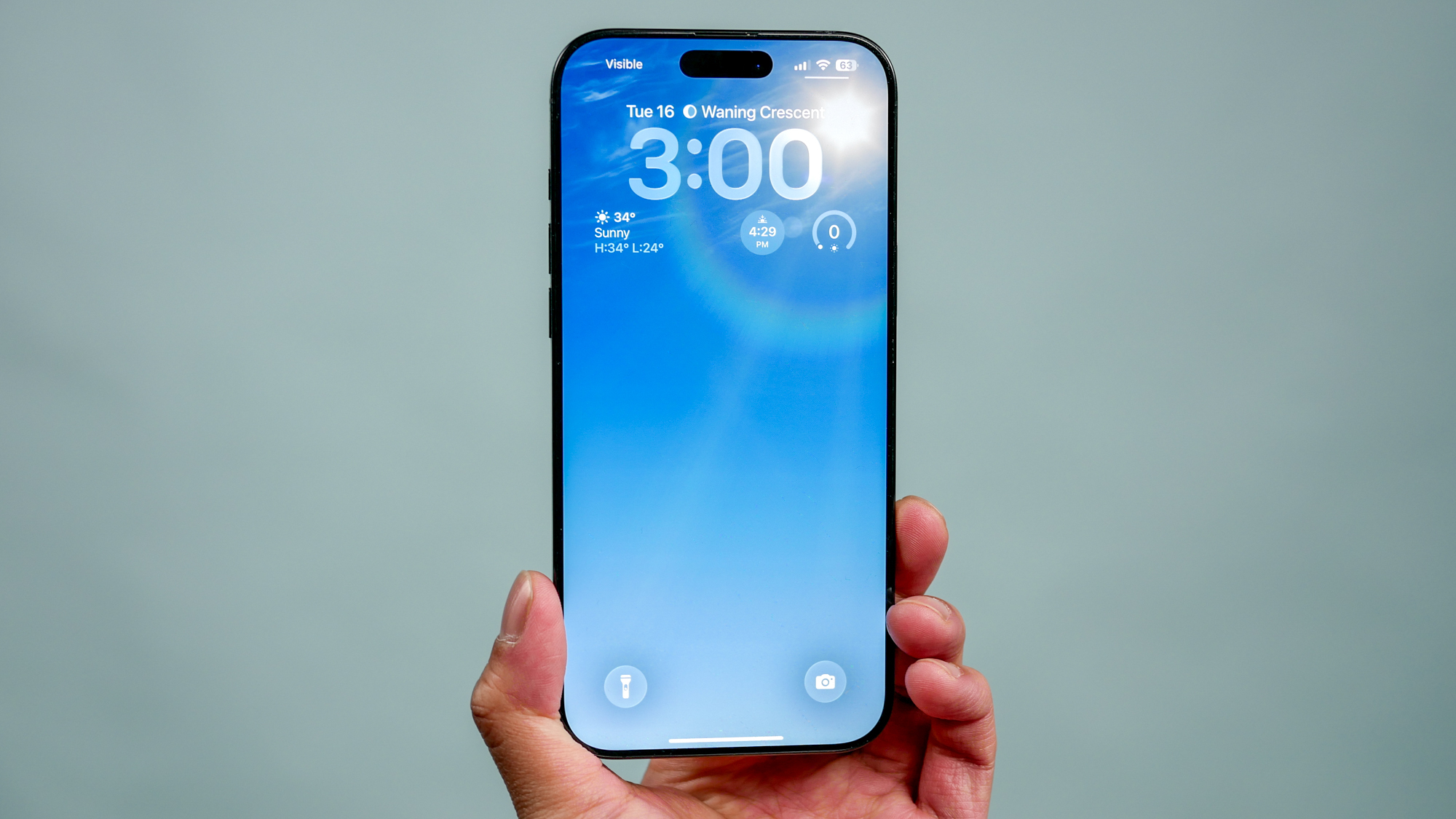Tom's Guide Verdict
Unless you absolutely have to have a 5G smartphone, skip LG's V50 ThinQ. You can buy a better flagship for less.
Pros
- +
Beautiful display
- +
Faster download speeds on Sprint's 5G network
Cons
- -
Poor battery life on LTE
- -
Really expensive
- -
Sprint exclusive at launch
- -
Dated design
Why you can trust Tom's Guide
At long last, 2019 is shaping up to be the year when we're finally seeing 5G smartphones. A few weeks after Samsung's Galaxy S10 5G made its debut on Verizon's fledgling 5G network, the LG V50 ThinQ has arrived, initially as an exclusive with Sprint.
We first saw LG's 5G phone at Mobile World Congress in Barcelona in February, and at the time, the V50 looked a lot like the V series phones that came before it. But now we've had a chance to see the phone's flagship feature — the ability to connect to faster 5G speeds — using Sprint's newly launched network, and the LG V50 is making a more distinct impression.
However, slightly faster speeds aren't really enough to make this phone a must-buy, especially with availability limited to where Sprint's 5G network has come online.
LG V50 5G Specs
| Price | $1,152 |
| OS | Android 9 Pie |
| Screen Size (Resolution) | 6.4-inch POLED (3120x1440) |
| CPU | Qualcomm Snapdragon 855 |
| RAM | 6GB |
| Storage | 128GB |
| microSD? | Yes, up to 2TB |
| Rear Camera(s) | Triple: 12-MP standard (ƒ/1.5), 16-MP wide angle (ƒ/1.9), 12-MP telephoto (ƒ/2.4) |
| Front Camera(s) | Dual: 8-MP (ƒ/1.9) and 5-MP wide angle (ƒ/2.2) |
| Battery Size | 4,000 mAh |
| Battery Life (Hrs:Mins) | 8:28 |
| Water Resistance | IP68 |
| Size | 6.27 x 3.0 x 0.33 inches |
| Weight | 6.46 ounces |
Price and Availability
For now, Sprint's the only place to get an LG V50 ThinQ, though eventually the phone will be coming to Verizon. Sprint is selling the LG V50 for $1,152, but if you lease the phone on an 18-month Sprint Flex plan, you can pay $24 a month for the phone. That's a discount from the actual lease price.
Sprint is only offering the phone in cities where 5G service is available, which is limited to Dallas, Atlanta, Houston and Kansas City at the moment. More cities will follow, though.
Get instant access to breaking news, the hottest reviews, great deals and helpful tips.
While $1,152 is a lot to pay for a phone, the V50 doesn't cost as much as the S10 5G. Samsung's phone starts at $1,299 when you buy it through Verizon.
Design: Last year's looks
There's nothing remarkable about the LG V50 ThinQ's design. LG has essentially stuffed the V50's 5G running gear and new silicon into the body of the V40, while also bumping up the battery size from 3,300 mAh to 4,000 mAh.
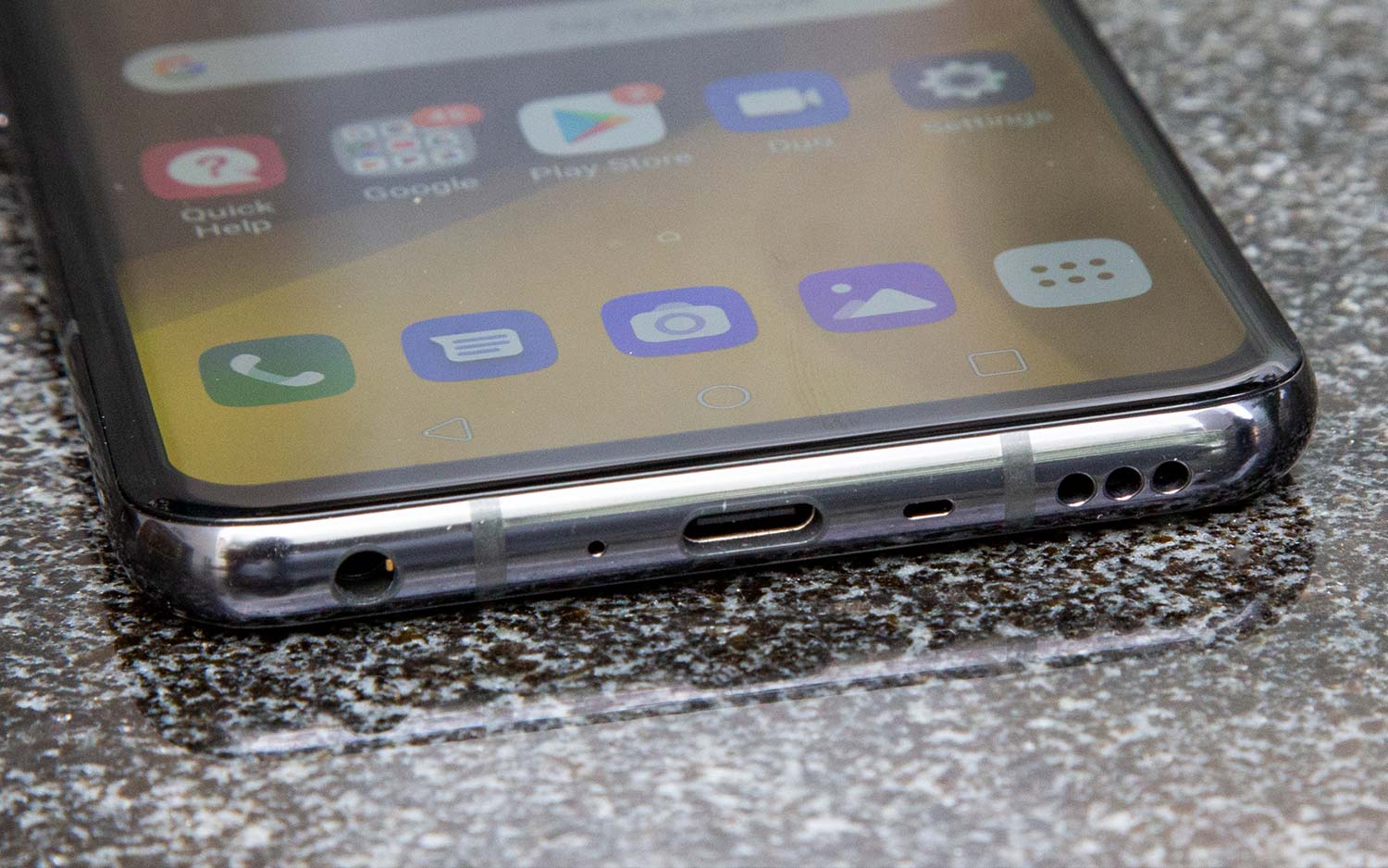
The result is a device that is almost imperceptibly thicker. The only way you'd be able to tell one LG phone from the other is that the V50's triple-lens housing doesn't protrude from the handset's glass back like it did on the V40.
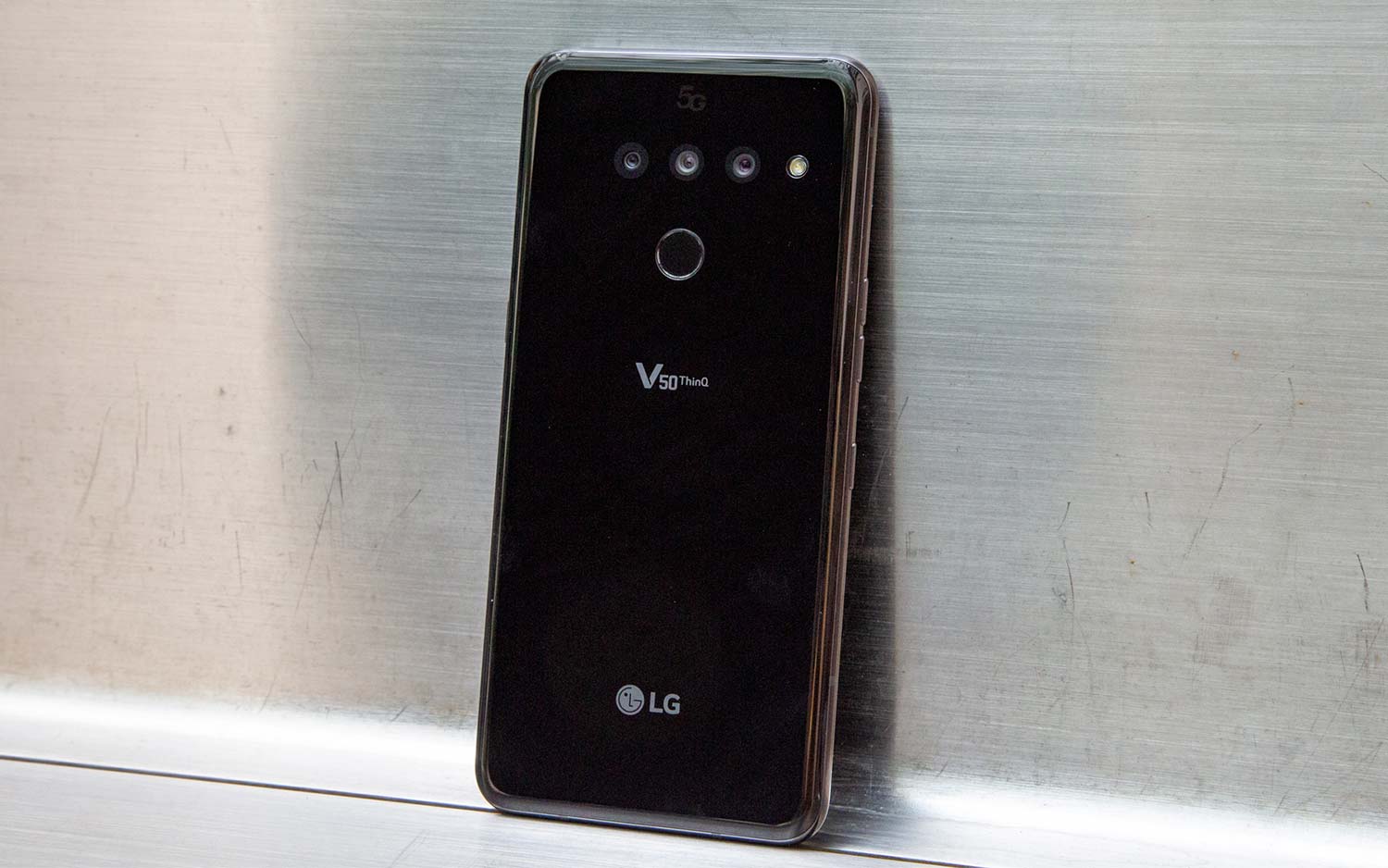
Below those rear cameras, you'll still find a rear-facing fingerprint sensor. Above that sensor, however, is where things get a little more interesting. LG has baked an LED-powered 5G logo into the back of the phone that lights up in trademark Sprint yellow when the device is in use. If you feel compelled to advertise to friends and strangers that you have one of the first 5G phones in the world, this might interest you. Personally, I find it gaudy — and it's certainly not helped by the ugly logo.
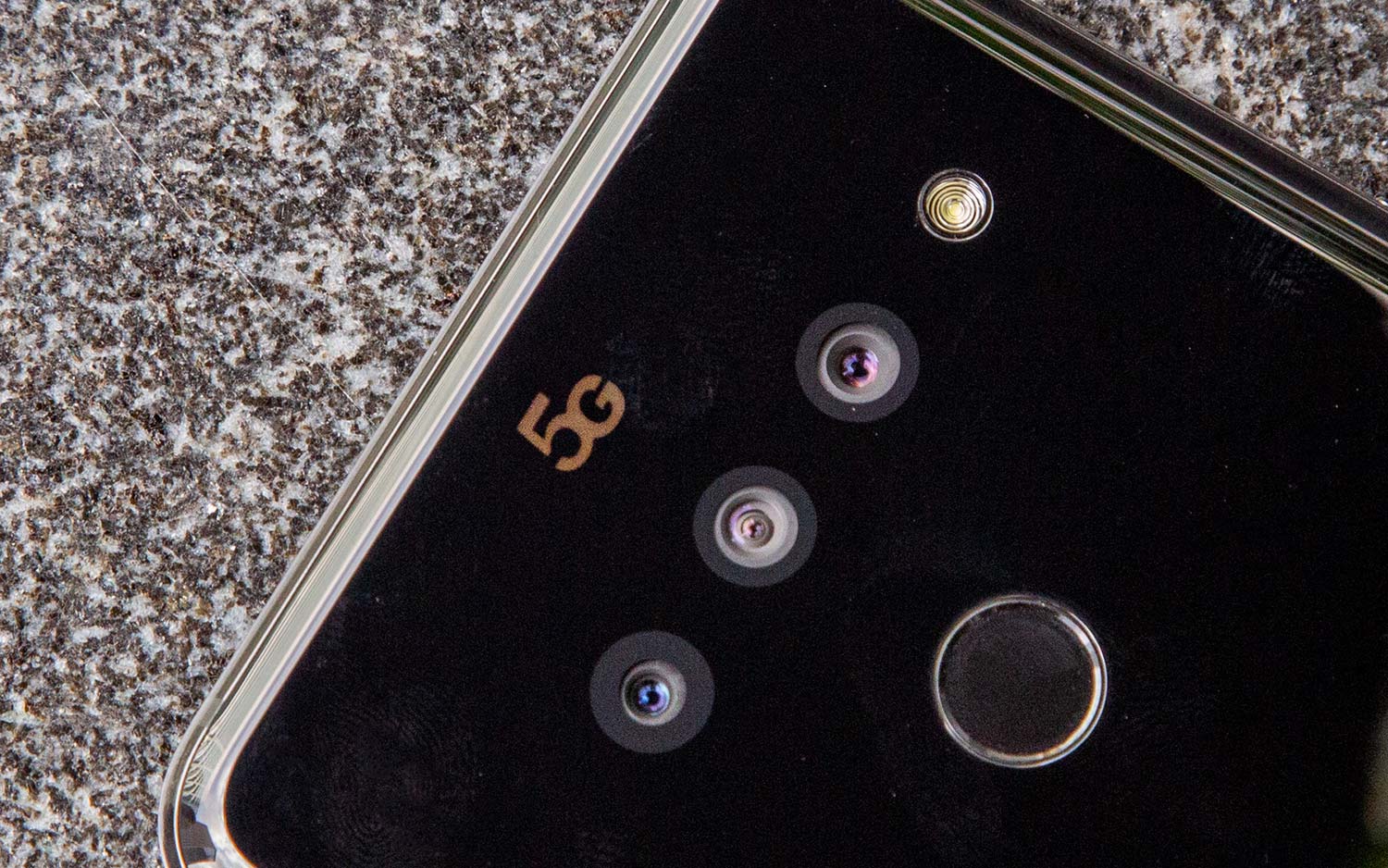
The 5G icon is otherwise the only notable design feature that distinguishes the V50 from the V40 — at least in the U.S. In certain markets, LG is launching a curious add-on for the V50 that would go a long way toward setting the phone apart — a second screen, called Dual Display, that clips onto the phone and functions as a cover case when closed. The panel is 6.2 inches in size, and is built to let you run multiple apps at once or use as a controller while playing certain games. The accessory won't see release in the U.S., so we weren't able to test it out. LG is still keeping quiet on pricing for now.
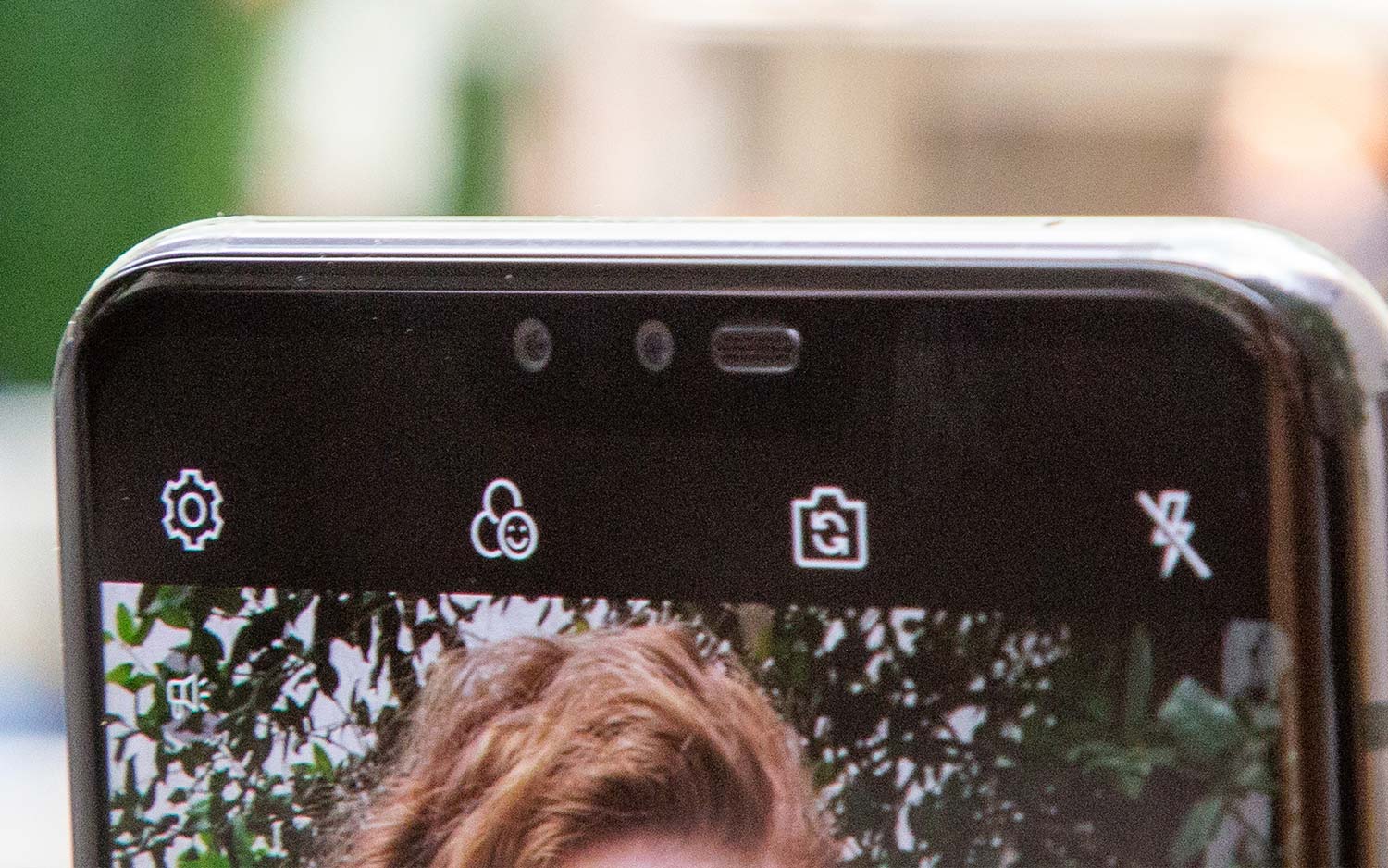
Without the Dual Display, the V50 is otherwise an extremely average-looking phone. It comes in black (very original) and sports a notch for its front-facing cameras. It’s exactly what you'd expect from a flagship in 2018 — a problem since we're writing this sentence in 2019. Here's hoping LG has more ambitious designs in mind for future phones, especially ones that cost north of $1,000.
5G Ready
After launching in Atlanta, Dallas, Houston and Kansas City, Missouri, at the end of May, Sprint's 5G network is expected to come to five additional cities soon: Chicago, Los Angeles, New York, Phoenix and Washington, D.C. We got a hold of the phone in Dallas after Sprint launched its 5G network there. So how does the LG V50 perform?
MORE: 5G Phones: Every Known Phone and Release Date
First, don't expect the gigabit speeds commonly associated with 5G, but that's largely because of what 5G is right now and how Sprint built out its network. Sprint is going with midband spectrum for its initial 5G launch. That allows the company to offer wider coverage but at the expense of peak speed.
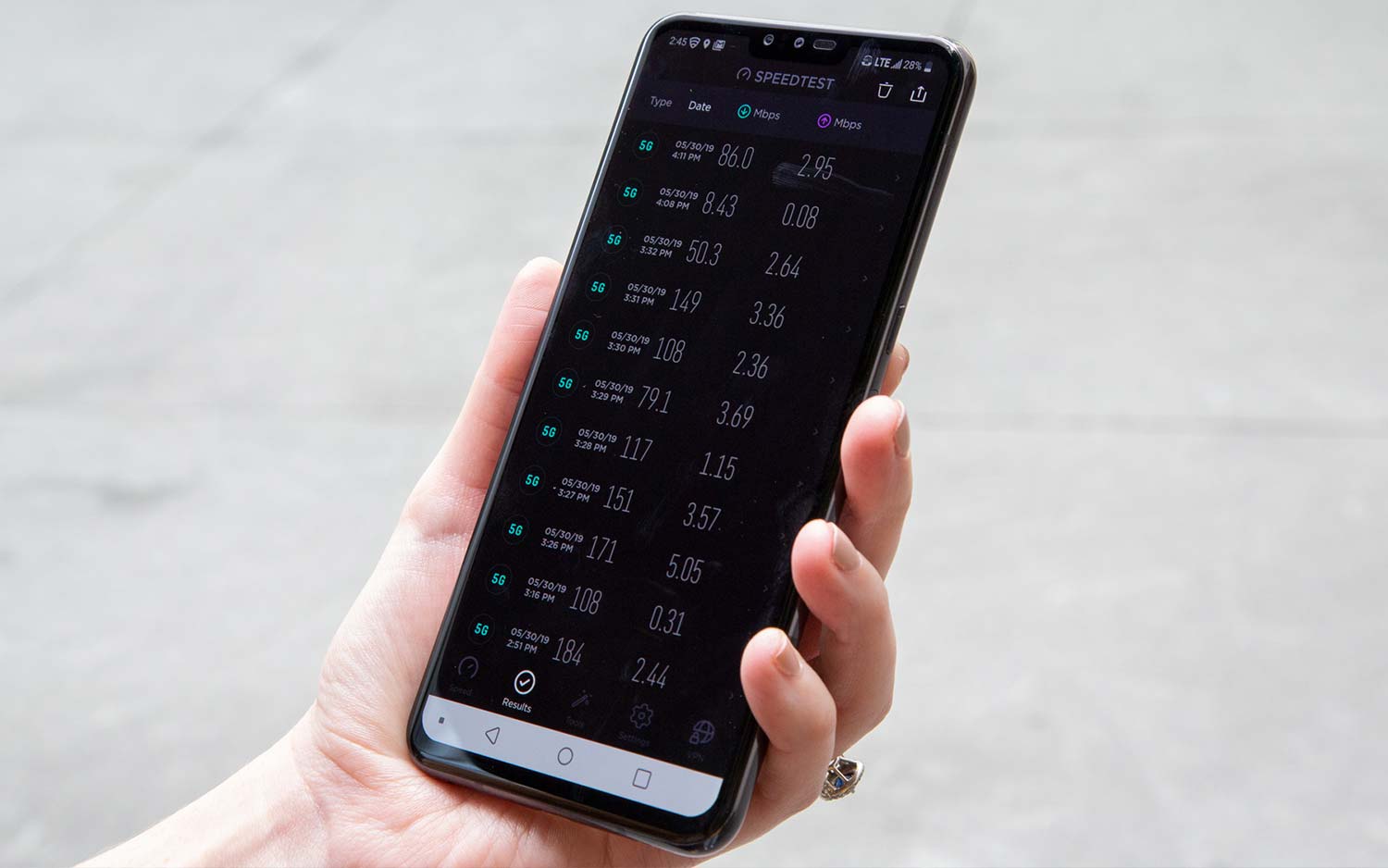
Still, where 5G is available, you won't mistake the speeds the V50 cranks out with LTE. In our testing around Dallas, the top speeds we saw ranged between 300 and 600 Mbps on average, which is much faster than you'd expect from an LTE network. (And much faster than you'd expect from Sprint, which fared poorly in our recent round of LTE testing when we stopped in Dallas.) It's not as fast as what we saw from the Galaxy S10 5G on Verizon's network in Chicago, but the V50 remained more consistently connected to 5G network in this round of testing.
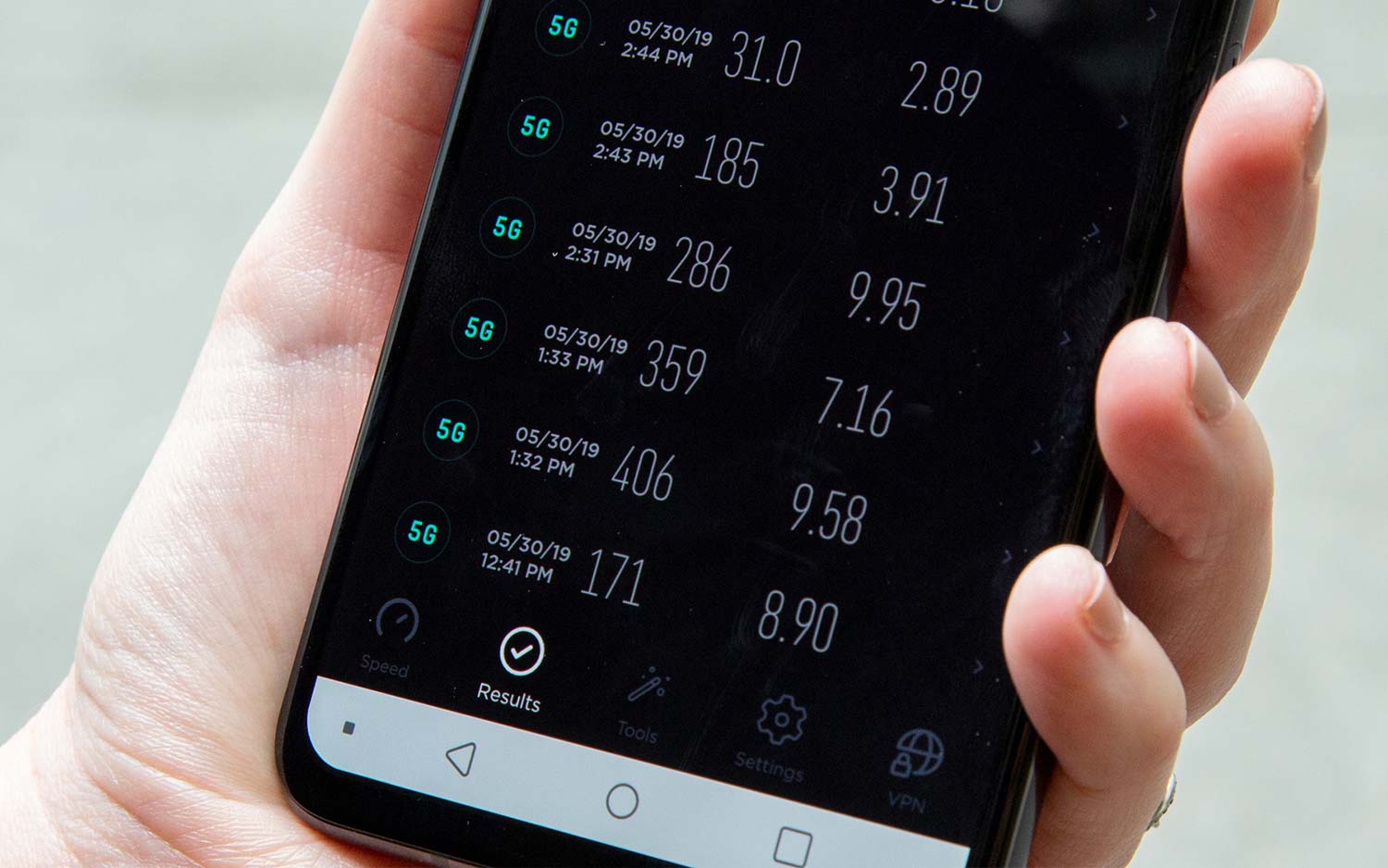
That said, a few stops around Dallas delivered some underwhelming results, with the V50 sometimes struggling to crack 200 Mbps download speeds. Some of that can be attributed to a lot of testers hitting Sprint's network at the same time, but even Sprint's engineers told us they usually topped out at 400 Mbps at some of the carrier's recommended test sites.
The LG V50 had some mixed results in real-world use. At its best, it took us just 1 minute and 30 seconds to download the massive PUBG Moble game over 5G — an impressive result. Downloading a 24-episode season of Parks & Rec on the LG V50 took a little less than 8 minutes on Sprint's network, but that wasn't much of an improvement over how long it took on an iPhone XS using AT&T's LTE network.
You can read our full report on 5G testing with the LG V50, but so far, the phone shows improved faster speeds (though not eye-popping numbers) with a few inconsistencies typical of a new network.
Display: Big and bright
The V50's display, like the V40's, is LG's most beautiful — a 6.4-inch POLED panel with a 19.5:9 aspect ratio and a resolution of 3120 x 1440. We were impressed by the V40's implementation of this screen and found it to be a formidable opponent to the Galaxy Note 9's display. But the Galaxy S10 5G's Dynamic AMOLED Infinity-O screen and the OnePlus 7 Pro's bezel-free display are best in class for 2019 flagships, and the V50 can't quite compare.
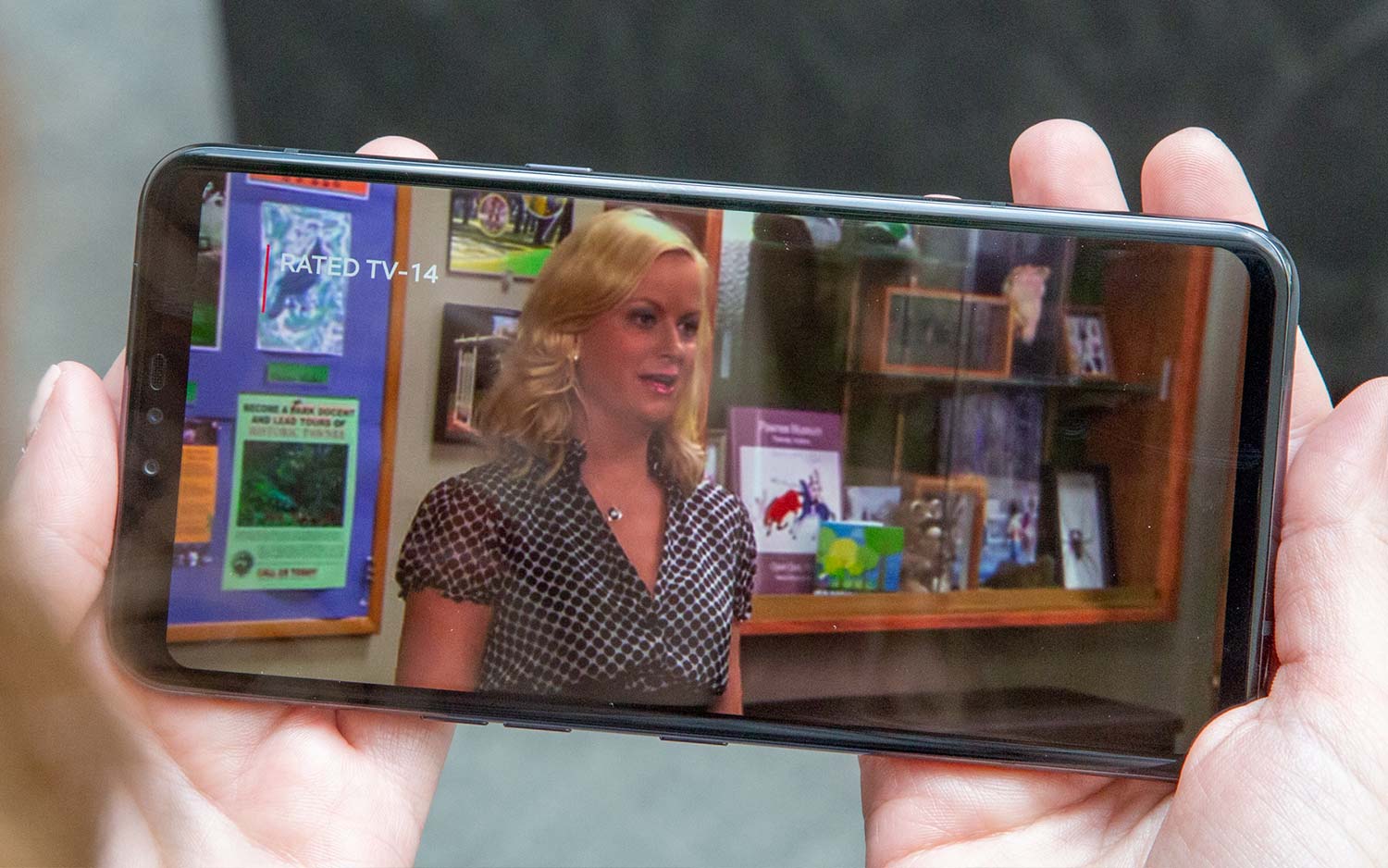
That said, the V50's display is big and bright. The screen is almost as colorful as the OnePlus 7 Pro's highly rated panel, covering 169.5% of the sRGB color gamut. The 7 Pro offers a wider range at 180%, but the V50 slightly edges out the more affordable OnePlus flagship when it comes to color accuracy, scoring 0.17 on the Delta-E test, where numbers closer to 0 are more accurate. The 7 Pro notched a 0.18.
The V50's display is just as bright as the S10 5G, reaching 522 nits on average, but the Galaxy S10 Plus is even brighter at 625 nits.
As long as you don't mind the notch, the V50's OLED panel is vivid enough for watching movies or playing games. I watched a trailer for The Goldfinch on YouTube, and a tense, smoke-filled scene in New York's Metropolitan Museum of Art was breathtakingly dramatic on the V50's screen.
Cameras: Still good, still not the best
The V50 inherits the triple-lens rear camera LG introduced with the V40 late last year. You get a 12-megapixel main shooter with a generous ƒ/1.5 aperture that lets an abundance of light into the sensor, aided by an ƒ/1.9 12-MP wide-angle camera and ƒ/2.4 telephoto lens for more zoomed-in portraits with a shallow depth-of-field effect.
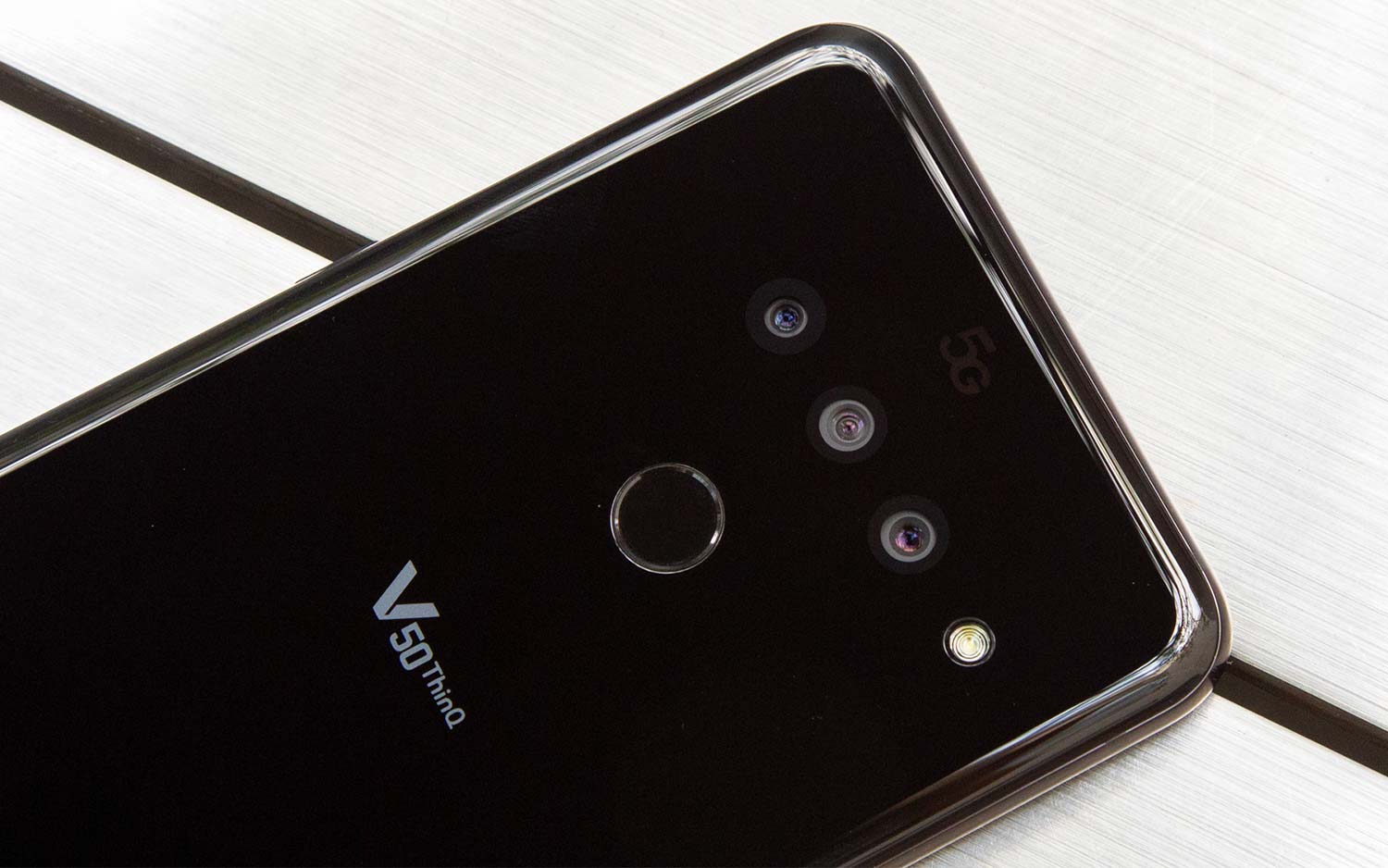
We weren't terribly impressed with the V40's camera when we reviewed the phone last year, but LG has assured us that the V50's hardware, recycled though it is, is still backed by the company's latest image-enhancing software. That includes AI scene recognition and a new Night View mode that intelligently combines 10 frames for one evenly exposed image.
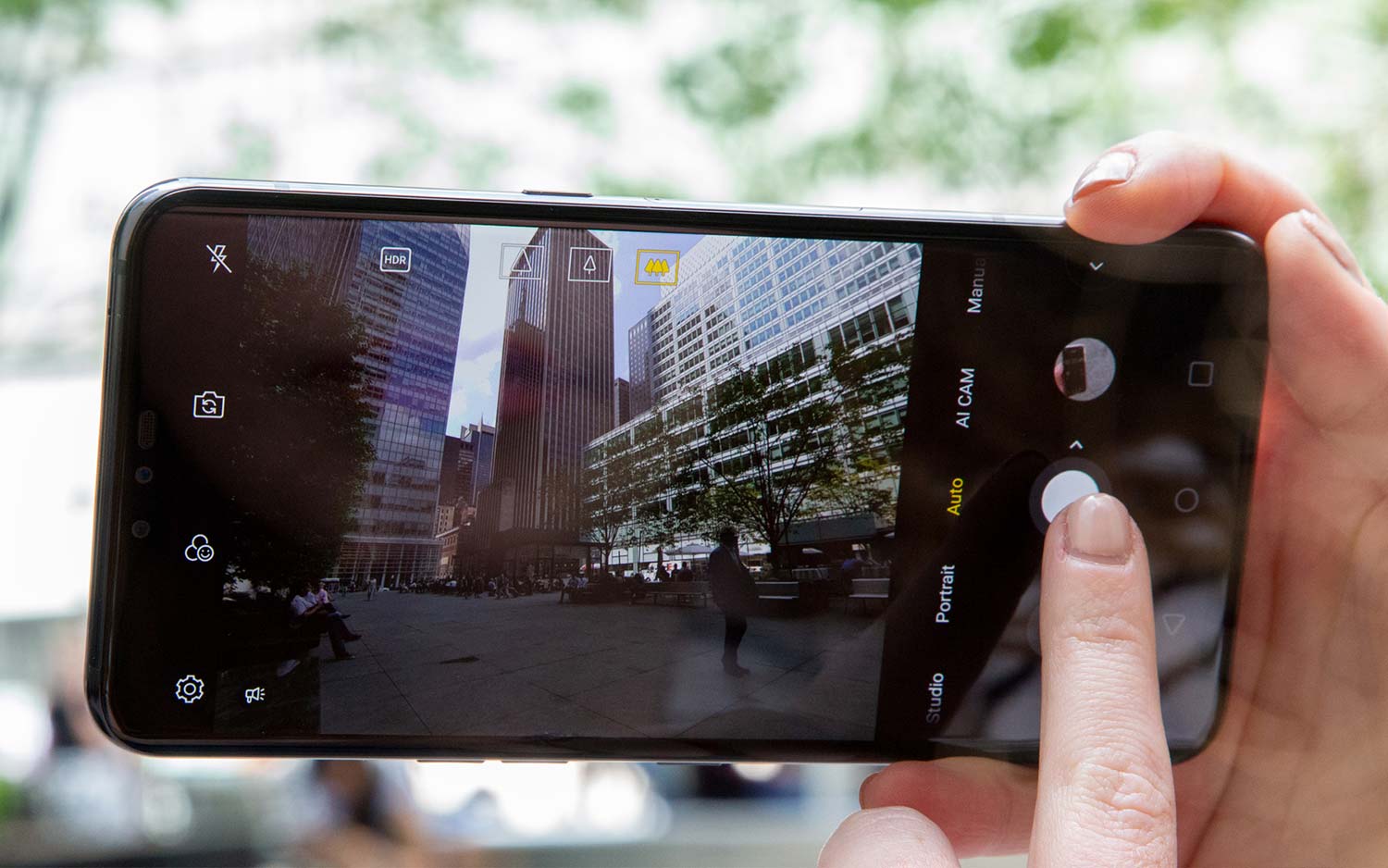
Still, the V50 misses out on the LG G8 ThinQ's real party piece: its 3D-sensing, time-of-flight-enabled front-facing Z Camera, that enables Air Motion gesture controls and Hand ID authentication. While the V50's selfie camera array is still dual-lens, the secondary camera is of the conventional, wide-angle type, unlike the G8's sophisticated 3D depth sensor. Still, the G8's sensor and the features it enables didn't wow us when we reviewed it earlier this year.
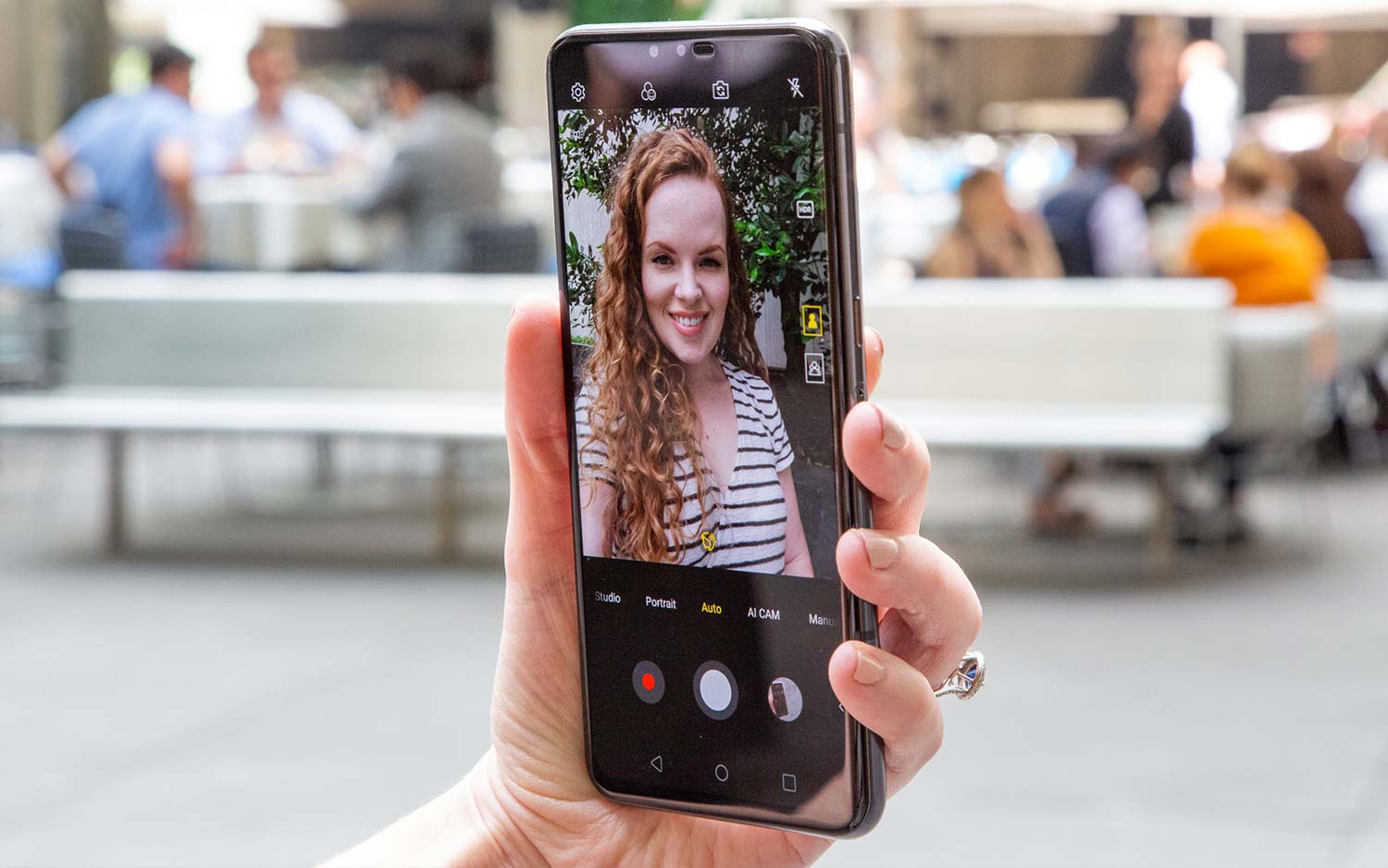
The V50's cameras lack the bells and whistles of the G8 and Galaxy S10 5G. But the shots they deliver are perfectly acceptable, even in the cases where they're not quite as good as rival smartphone cameras.

In this shot of vases of flowers lining a shop's shelves, Google's Pixel 3 wins. The contrast between the petals in each flower is crisp. The individual petals of the lone rose on the bottom right of the image are clearly delineated. The V50 blows out the upper left of the photo, where sunlight was streaming into the shop. The Galaxy S10 Plus darkens the photo, but you can still see more detail in the florals than you can in the V50.

The V50 is stronger in Portrait Mode. It was a close call between the V50 and Samsung's Galaxy S10 Plus, which both sport triple-lens arrays. My hair is redder in the V50's image, but the camera's blur is worse around my curls. This is a challenge most phones fail, so it's not a surprise that the V50 falls short here. The trees in the background of the S10 Plus portrait look more vivid and draw the eye immediately, but my skin and hair appear flatter than they do in real life.

I turned on the V50's AI Cam feature for this shot of a Manhattan skyline, which the camera recognized as a cityscape. The blues in the V50's shot are vivid, but the S10 Plus captured a more color-accurate image. The Pixel 3 heightens the shadows and contrast of the buildings against the sky. Overall, this shot was too close to declare a winner.
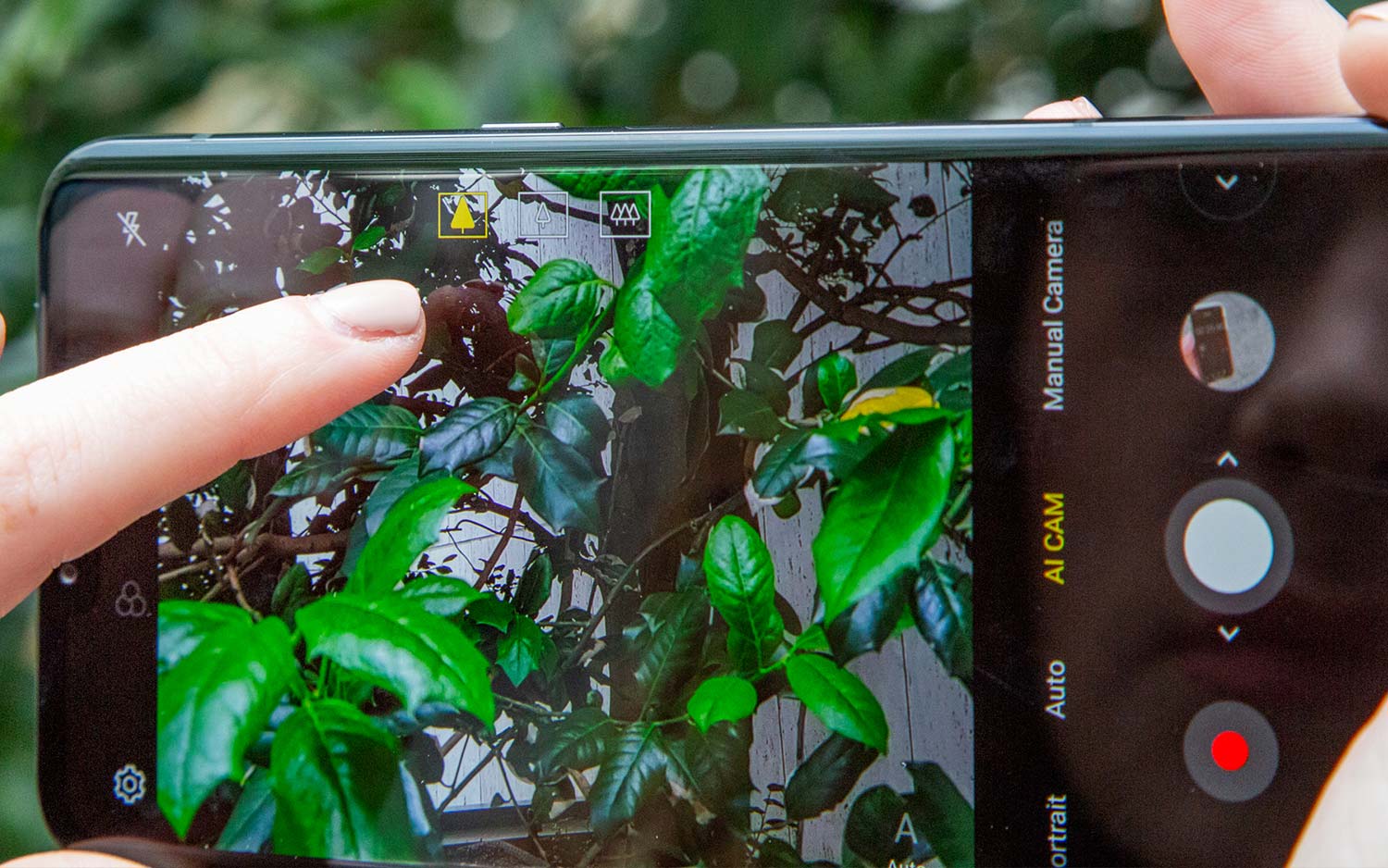
That's a good thing — it means smartphone cameras are becoming so sophisticated regarding software that the differences in high-end phones are almost negligible. But the fact that you can get Google's powerful photography features in a sub-$400 device such as the Pixel 3a is exactly why you shouldn't buy the V50 if you just want a good camera phone.
Battery Life: Fine over 5G, but not so good on LTE
LG packed a 4,000 mAh battery in its 5G flagship as a safety net, in case 5G connectivity was a battery-suck. Sprint said its 2.5GHz network, which is connected to both 4G and 5G simultaneously, was less draining than 5G built on mmWave spectrum.
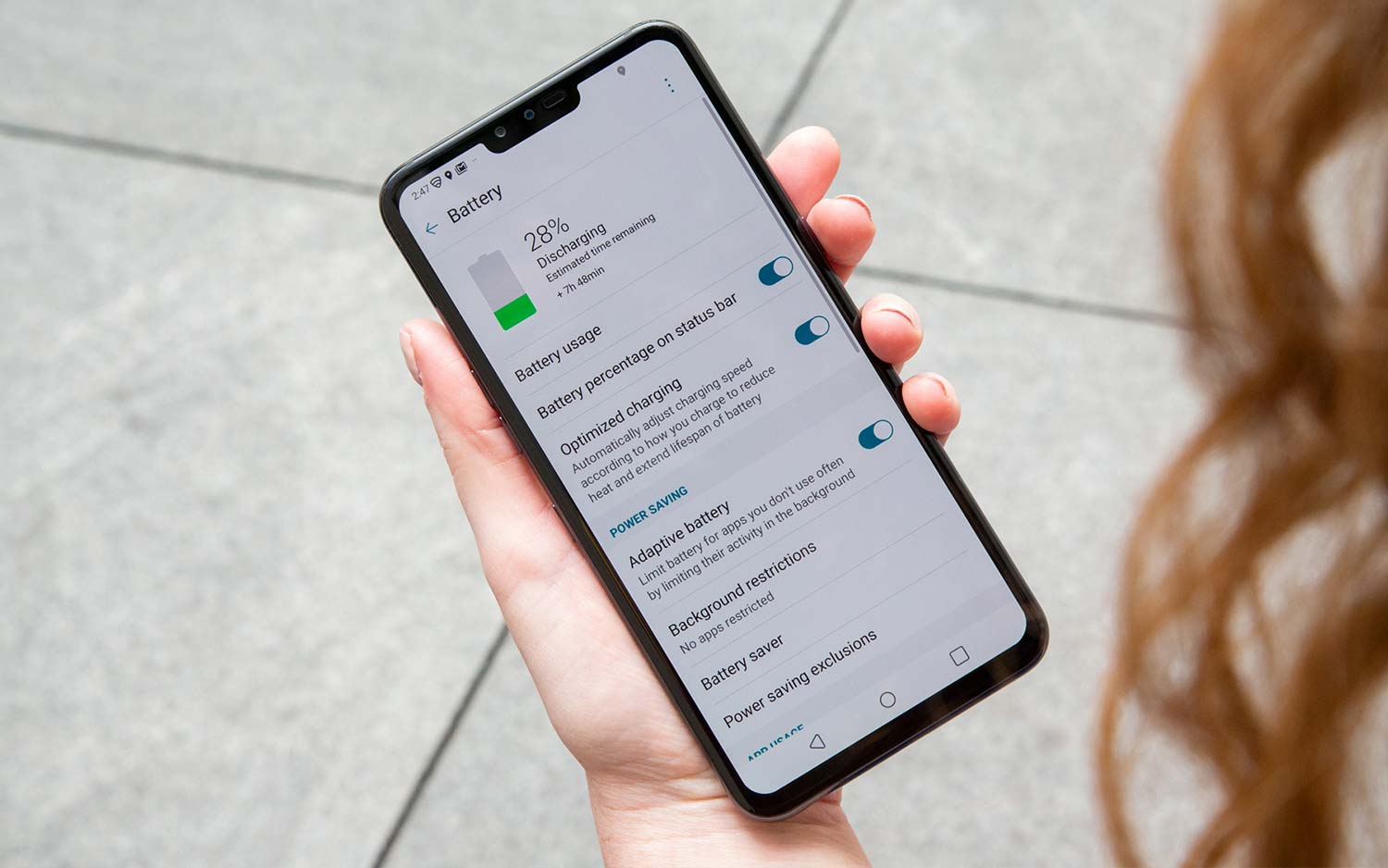
As I raced around Dallas doing 5G testing on Sprint’s network, the V50 ThinQ chugged along admirably. After 3 hours of heavy use, during which I installed PUBG Mobile (then deleted and reinstalled it multiple times) and other apps, downloaded an entire season of Parks and Recreation, ran dozens of speed tests on Ookla's app, made a phone call to my husband and surfed the web, the V50 was down to 70%.
MORE: The Best Camera Phones
I didn't get a chance to run the Tom's Guide Battery Test, continuous web-surfing until the battery dies, over 5G, but when I brought the device back with me, I tested it on Sprint's LTE network. The results were not good. The phone lasted just 8 hours and 28 minutes. That's in line with LG's other flagships, including the G8 (9:29), the V40 (8:48) and the G7 (8:35), but lags far behind rivals like the S10 Plus (12:30) and even the S10 5G (10:56).
We'll need to test the V50 more extensively on a 5G network to gauge its battery performance, but right now, we're unimpressed.
Performance: No match for OnePlus 7 Pro
With 6GB of RAM and Qualcomm’s latest Snapdragon 855 processor, the V50 ThinQ turns in a decent performance.
The V50 never stuttered, even as I pushed it to the limits in my 5G testing by installing giant apps, playing games, downloading dozens of TV episodes on Netflix, cruising the web and generally putting the phone through its paces.
When it comes to graphics performance, the V50 is among the best. LG's latest scored 5,566 on 3DMark's Sling Shot Extreme OpenGL ES 3.1 benchmark, sliding just ahead of Samsung's Galaxy S10 5G, which notched 5,563. The OnePlus 7 Pro scored 5,587 on the benchmark, while the iPhone XS hit just 4,339.
MORE: 5 Ways to Speed Up Your Android Phone in Under 5 Minutes
But in Geekbench 4's test of overall system performance, the V50 hit 9,015, well below its rivals, the S10 5G (10,684), the S10 Plus (10,732) and even LG's other 2019 flagship, the G8 ThinQ (10,958). The OnePlus 7 Pro (11,227) led the pack, thanks to its 12GB of RAM.
Bottom Line
With the V50 ThinQ, LG is one of the first phone makers to offer a 5G-ready device in the U.S., trailing Samsung by just a few weeks. The V50 might not be an eye-catching or even entirely new device in the same vein as the Galaxy S10 5G, but that might not matter much to LG, so long as the V50 delivers fast, reliable performance in cities where 5G is available. In my experience using the V50 on Sprint's 5G network, the phone definitely saw faster speeds, but not nearly as fast as the S10 5G on Verizon's network.
However, LG should be commended for shoehorning the guts of a 5G phone into the V40's body — no small feat, as Samsung's 6.7-inch monster 5G phone proves. But aside from that technological achievement, the V50 appears all too familiar.
For years, LG has unnecessarily split its premium customers between its G- and V-series lines, restricting features to one model or the other, rather than pooling all its efforts into a single flagship statement that really moves the needle. And for better or worse, that’s exactly what the company has done again for 2019.
If you're really excited for 5G and you're a Sprint customer living in one of the carrier's early 5G markets, you should keep an eye out for the V50. But in our testing, 5G isn't worth the premium for this otherwise average handset.
Credit: Tom's Guide
Caitlin is a Senior editor for Gizmodo. She has also worked on Tom's Guide, Macworld, PCWorld and the Las Vegas Review-Journal. When she's not testing out the latest devices, you can find her running around the streets of Los Angeles, putting in morning miles or searching for the best tacos.

